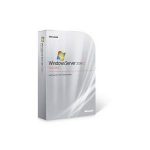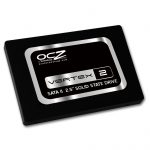This week did not have any ultra exciting announcements like Windows Home Server 2011, a Cougar Point bug or anything of that nature, so I picked a few top tidbits that I saw this week.
TrendFocus releases Q4’2010 Hard Drive Market Analysis Report
TrendFocus published its Q4 2010 report on the worldwide hard drive market titled Storage Demand Analysis System CQ4 ’10 Quarterly Update, Executive Summary.
Some interesting stats from the Executive Summary:
Approximately 167 Million HDDs shipped for 88 Exabytes of capacity and the market share numbers put Western Digital in front with Seagate close behind. Hitachi comes in third from a market share perspective. This includes not just desktop drives but also enterprise, notebook, and consumer electronics.
HDD Supplier CQ4 2010
Market Share Percentage in Units
| WD | 31.2 |
| Seagate | 29.2 |
| Hitachi GST | 18.1 |
| Toshiba | 10.8 |
| Samsung | 10.7 |
| Total | 100 |
Trendfocus has subscriptions to regular, detailed reports if you are really into these statistics.
Windows 7 and Windows Server 2008 R2 Service Pack 1 hit RTM and Release Dates Announced

Word on the street from Microsoft is that Service Pack 1’s for both Windows 7 and Windows Server 2008 R2 have hit RTM and will be released shortly. For MSDN and TechNet subscribers Service Pack 1’s will be available on 16 February 2011 and for everyone else on 22 February 2011.
The Windows 7 Service Pack 1 is basically a roll-up of updates and patches without Windows XP SP2-like upgrades. Perhaps the biggest for home server users is the new Remote Desktop client that can take advantage of RemoteFX.
On the other hand, the Windows Server 2008 R2 SP1 gets some really cool new features like RemoteFX and Dynamic Memory. RemoteFX will basically allows Windows 7 virtual machines hosted in Hyper-V on Windows Server 2008 R2 SP1 to boost graphics performance if the server’s hardware allows it. Dynamic Memory is a technology that allocates memory based on a virtual machine’s need, which helps increase density because of more efficient memory allocation.
OCZ is Switching to 25nm NAND

This news has been less well received. Apparently OCZ is now using newer, lower-cost 25nm NAND in their Vertex 2 line. The newer NAND is good for only 3,000 P/E cycles compared to 5,000 on older 34nm NAND. As a result, OCZ has increased overprovisioning so users will get less usable space on newer Vertex 2 drives than older ones. Initial user reports seem to also indicate that the newer 25nm NAND based Vertex 2 drives are slower than the older versions.
This really begs the question, can (or should) a company decrease usable storage space, and offer a lower performance product under the same name? Undoubtedly 25nm NAND is making OCZ’s drives less expensive to produce, but retail prices have not followed suit during the transition. Frankly, OCZ should label the 25nm parts “Vertex 2 SE” drives or something to designate the difference. Without a new designation, users researching based upon online reviews will be severely disappointed when they release the newly updated drives.
Microsoft-Nokia Partnership
This one is everywhere in the news. The quick story is that Nokia finally realized that Symbian was not going to let it challenge Apple’s iOS (not Cisco’s IOS btw) or Google’s Android in the future. The choice was either, 1. develop something new, 2. use Android, or 3. Team with Microsoft/ HP for either Windows 7 Mobile or WebOS. Nokia decided to go with Microsoft greatly expanding Windows 7 Mobile’s potential reach since Nokia has more than ten times Microsoft’s smartphone sales.
It will be interesting to see how Nokia fares in all of this. If this decision was a miss, then Nokia, one of the most dominating mobile phone companies over the last two or three decades will basically have to abandon a second platform in a short time frame. My only hope is that Microsoft puts some kind of awesome RemoteFX RDC client on a Nokia Windows 7 Mobile phone!



